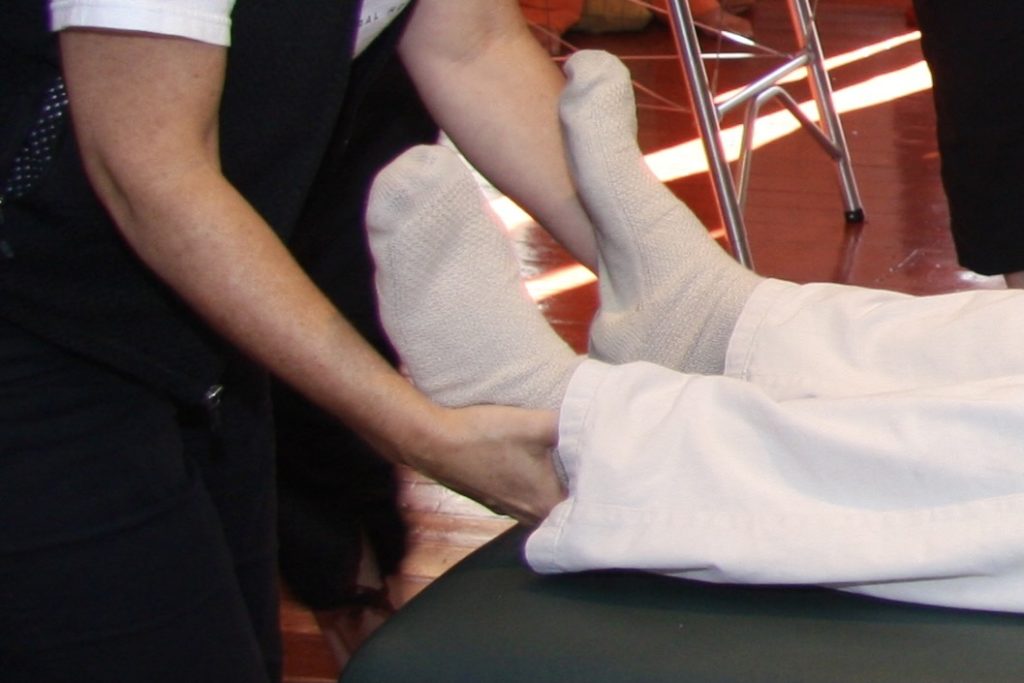
This is the first in a series of articles looking at the variety of ways we can use a Half Moon Vector (HMV) through the legs. Each article will introduce one thing you might want to explore, the signals to watch and feel for, why it might be helpful, and an example from my own experience with clients.
In this first article, let’s explore…
Does the client’s energy move quickly or slowly?
This is one of the first things I focus on when I’m getting to know a new client. I often use it to guide some of my decisions for the remainder of that first session as well as for subsequent sessions. It may be that the client’s energy moves neither quickly or slowly but somewhere in between. In this case, I likely won’t modify the session based on this criteria.
How do you obtain the information?
Once you have the first HMV in place, shift your attention to feedback signals that indicate your client’s energetic response. How long does it take to see a working sign? Do you see one at all? What do you feel in your hands?
If you see a working sign almost immediately, it likely means your client’s energy moves quickly. With clients like this, you may even notice a deep breath during the sitting assessment. If it takes a long time to see a working sign or you don’t see a working sign, it’s possible the client’s energy moves slowly.
Focussing on what you feel in your hands, if energy starts to come into your hands almost immediately, this indicates, as you might surmise, the client’s energy moves quickly. Conversely, if you feel that nothing is happening or maybe sense just a little movement as you are completing the fulcrum, this indicates a slower energetic response.
It’s important to note that energy that moves quickly is no better or worse than energy that moves slowly. It would be like saying blue eyes are better than brown eyes. It’s simply an aspect of your client’s world that can be helpful to pay attention to. And don’t forget, every client is unique so you may have clients that don’t fall neatly into either category.
How can you use this information to guide your session?
There are several means available. Here are a few to try: modify the length and pace of your session as well as using a more structural or more energetic touch. You can also make use of fulcrums that add compression or change the direction of your rib fulcrums to increase containment or expansion.
Clients whose energy moves quickly frequently benefit from shorter sessions without long pauses. Usually a structural touch feels better to this client and is more helpful. These clients may also be very sensitive and they may deplete easily. A shorter, brisker session with lots of structure can help because it contains their energy and can help them to feel their edges. Fulcrums that utilize compression and increase containment are usually very helpful as well.
Conversely, clients whose energetic response is slower may do better with slower sessions, slower fulcrums, more and/or longer pauses and a more energetic touch. Angling your rib fulcrums to increase expansion can also be very helpful. Compression fulcrums are not usually helpful, although may be with particular clients.
A case example:
I had a client several years ago whose energy moved very slowly. I didn’t pick up on this right away. She had come to me for help with hip pain. I found the acetabular field in her painful hip a bit thin, so I used the bubblegum fulcrum from Geometry of Healing. Compression. She came in for the next session in more pain. Looking back, had I paid more attention to how her energy moved, I might not have chosen that fulcrum even though my evaluation indicated a need for it. She turned out to be a client that taught me a lot about working with slower moving energy. As our work together progressed, I used more energetic touch, performed fulcrums more slowly and added more and longer pauses. As I modified my sessions, she did better and better.
How might you improve your skills?
Every week, choose one or two clients to practice this with. You may already have someone in mind! Try adapting your sessions and see what happens. You’ll be surprised at how quickly you master this aspect of Half Moon Vectors. Have fun and let me know how it goes!
In the next issue, we’ll look at using the beginning of the ZB session to get a sense of how well your client’s field is organized. Stay tuned!
